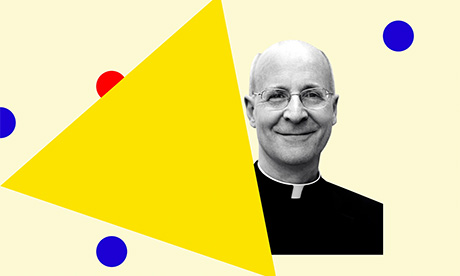In early July, The New York Times published two articles that had seemingly little to do with one another.
One covered the Entomological Society of America’s decision to stop using the terms gypsy moth and gypsy ant.
The other was about a new movie by the director Paul Verhoeven featuring an affair between two 17th-century nuns. “Forgive them, Father, for they have sinned,” the article begins. “Repeatedly! Creatively! And wait until you hear what they did with that Virgin Mary statuette.”
“When I read that article in the morning over my yoghurt and cranberry juice, I couldn’t believe what I was reading.
“It was just disgusting,” Father James Martin, a Jesuit priest and writer, told me.
He was talking about the movie, not the moths.
He found it striking that the Times would deferentially cover a language shift meant to show respect for Roma people but would also print a story that relished a film scene in which a holy Catholic object is defiled.
“Anti-Catholicism is the last acceptable prejudice,” he wrote on Twitter, linking to an article he wrote 20 years ago that explores why some Americans still treat Catholics with suspicion or contempt.
His argument, then and now, is that it’s acceptable in secular, liberal, elite circles—such as The New York Times—to make fun of Catholicism, particularly the Church’s emphasis on hierarchy, dogma, and canon law and its teachings related to sex.
Martin is well known in the American Catholic world for his relatively progressive approach to issues that have split the Church, including advocating for greater Catholic acceptance of LGBTQ people.
As a result, he’s a frequent target of opprobrium from many of the conservative Catholics who tend to protest anti-Catholicism most loudly, which is why I wanted to talk with Martin.
He is deploying arguments similar to those of his critics.
We are living in an era when newsrooms are revising their style guides to be more sensitive about race, gender, and sexuality; flippant comments perceived as bigotry can cost people their job, and entomological societies are scouring their insect rosters for pejorative names.
Yet, some aspects of identity and belief still seem to be fair game for mockery.
Our conversation has been condensed and edited for clarity.
You know people who are celibate and chaste. You know people who are single. You know aunts and uncles. You know widows. No one thinks they’re insane or disgusting or paedophiles or dangerous. But when a person chooses it freely, suddenly they become a freak.
Emma Green: The New York Times wrote up this new movie called Benedetta and its debut at the Cannes Film Festival. The article—written by a reporter, not a critic—is very taken with the movie’s lesbian nun sex. They apparently use a statue of the Virgin Mary to do something that I can’t actually say out loud to you because you’re a priest. When you read this, why did it strike you as anti-Catholic prejudice?
James Martin: Well, first of all, it’s very subjective. One person’s critique is another person’s anti-Catholicism. Second of all, we have to be careful not to label every single critique of the Church as anti-Catholicism. The Church deserves its critics, especially in the light of the sex-abuse crisis and financial scandals and other things.
What bothered me more than the film was the article. The fact that you had a hard time describing what the article said to me should be an indication of its offensiveness. What if it were directed toward another religion—something holy from Islam or Judaism being used as a sex toy—and that was made fun of in The New York Times? To me, it seemed unnecessarily mocking.
Green: Why do you think it feels more acceptable to some people for The New York Times to write like this about Catholics than about, say, Orthodox Jews?
Martin: I think anti-Catholic tropes get a pass in our culture for a number of reasons, in a way that anti-Semitism, anti-Islam, or even homophobia do not. The tone of the article was: Isn’t this funny? Isn’t this silly? Isn’t Catholicism ridiculous?
Green: Do you think this is because people assume that the Catholic Church is powerful, and many Catholics in America are white and are part of the Christian cultural majority? Is it that making fun of powerful people or institutions doesn’t seem out of bounds?
Martin: We’ve always lived in a largely Protestant culture that has been suspicious of Catholicism—papal infallibility, the Virgin birth, celibate priesthood. And there’s a long history in the United States of anti-Catholic tropes. There are many reasons, including distrust of authority, and a misunderstanding of celibacy and chastity.
Green: I’ll show my cards, which is that I don’t care that much about one movie or the way it’s written about in The New York Times. But this sparked my interest because it’s arguably an example of the ambient cultural signals that build a sense, especially among some conservative Catholics, that they are culturally on the outs. You’re not typically in that camp, grinding the axe around how oppressed Catholics are. In this instance, do you have any sympathy for that point of view?
Martin: Cries of anti-Catholicism are too frequent. Anti-Catholicism is nowhere near as prevalent as racism, homophobia, or anti-Semitism. Not every critique of the Church is an offense against religious liberty. And The New York Times is not anti-Catholic. But from time to time, it’s important to remind people that anti-Catholicism is not a myth. Continue reading
